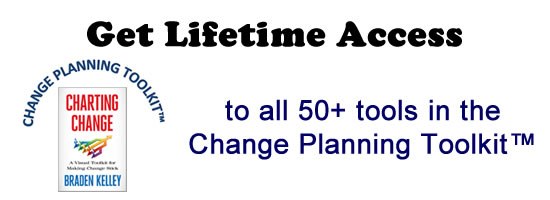The Bigger the Back End, The Stronger the Backlash

Be careful. When innovation gets real, people react in unpredictable ways.
People whom you thought were forward thinking recoil in reactionary conservatism. Others are willing to move a step forward but vigilantly cautious. The more concrete you get in detail, the stronger the reaction you receive internally.
The Back End of Innovation is where you host learning in-market pilots, where you plan to launch and scale an innovation in the market, and where you sell your organization on launching something that augments an existing practice or transforms your business model.
The last part is often the hardest—and also stands as the real test of whether or not a culture is sincere about their innovation program. The internal obstacle course becomes a dynamic, never-ending homework assignment.
You may end up writing an Opportunity Study, a Strategic Brief, a Cost/Benefit Analysis, a Business Case, a segmentation study, data on this and that, an ROI case on both actual and strategic value, and a launch plan before you get the trust, budget, and authority to launch even a pilot in one test market.
Most of these intensive studies are premature and unnecessary at this stage, just assigned to assuage internal fears, not an enlightened and empowering way to commission innovation work. If the organization has a clearly defined Innovation Strategy and metrics, then you see less of this active anxiety: however, one truth resounds.
The larger the potential opportunity, even if it is centered in the core business or a close adjacency, the more it strikes a corporate nerve. The backlash begins.
After crashing into a wall of internal objections, pessimism, and well-intentioned “realism,†just in order to be granted the green light to move into an in-market pilot, you then meet with more formidable resistance if the pilot exceeds expectations. This is good news, really, although it sounds harrowing, exhausting. The concept is being taken seriously now.
As obvious as it sounds it is compassionate and kind to remember that no one is messing with you personally. They are vitally concerned with the new business opportunity and act as anxious as new parents over a newborn. In this scenario, you are merely the OBGYN or midwife who receive both gratitude and a long list of questions.
Watch out here comes the free advice part of the column: therefore, do not blame the company—just gently point out how it can mature their innovation discipline. Do not blame the people asking you for mountains of data and projections—they are just unused to working in this new framework and are projecting the tools and methods they have used in the past.
This is new territory. You and your teams are pioneers. The bigger the potential opportunity, the more it will bring up its opposite—this fact seems like a law of nature inside organizations. Honor the backlash. The prize is on the other side. As the old song says, “nothing left to do but smile, smile, smile.â€
Wait! Before you go…
Choose how you want the latest innovation content delivered to you:
- Daily — RSS Feed — Email — Twitter — Facebook — Linkedin Today
- Weekly — Email Newsletter — Free Magazine — Linkedin Group
 Michael Graber is the managing partner of the Southern Growth Studio, an innovation and strategic growth firm based in Memphis, TN and the author of Going Electric. Visit www.southerngrowthstudio.com to learn more.
Michael Graber is the managing partner of the Southern Growth Studio, an innovation and strategic growth firm based in Memphis, TN and the author of Going Electric. Visit www.southerngrowthstudio.com to learn more.
NEVER MISS ANOTHER NEWSLETTER!
LATEST BLOGS
Three things you didn’t know about credit cards
Photo by Ales Nesetril on Unsplash Many of us use credit cards regularly. From using them for everyday purchases to…
Read MoreFive CV skills of a business-minded individual
Photo by Scott Graham on Unsplash The skills listed on a CV help employers quickly understand your suitability for a…
Read More


